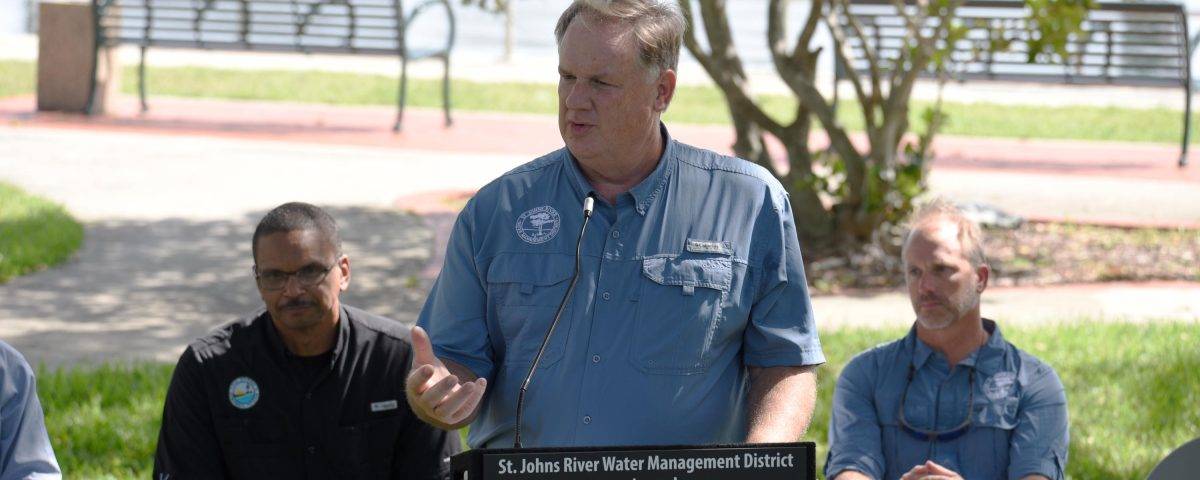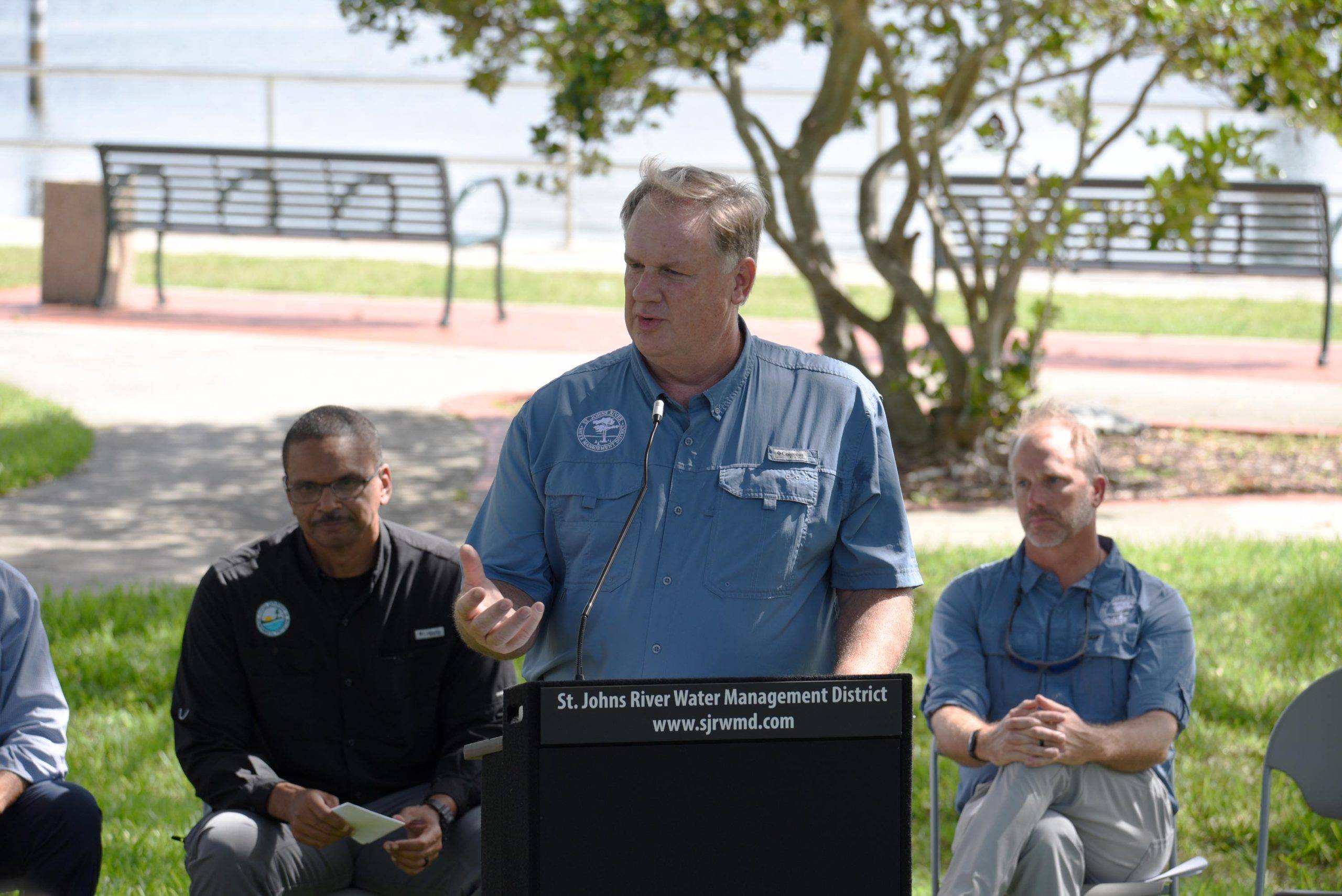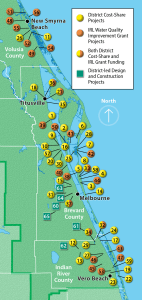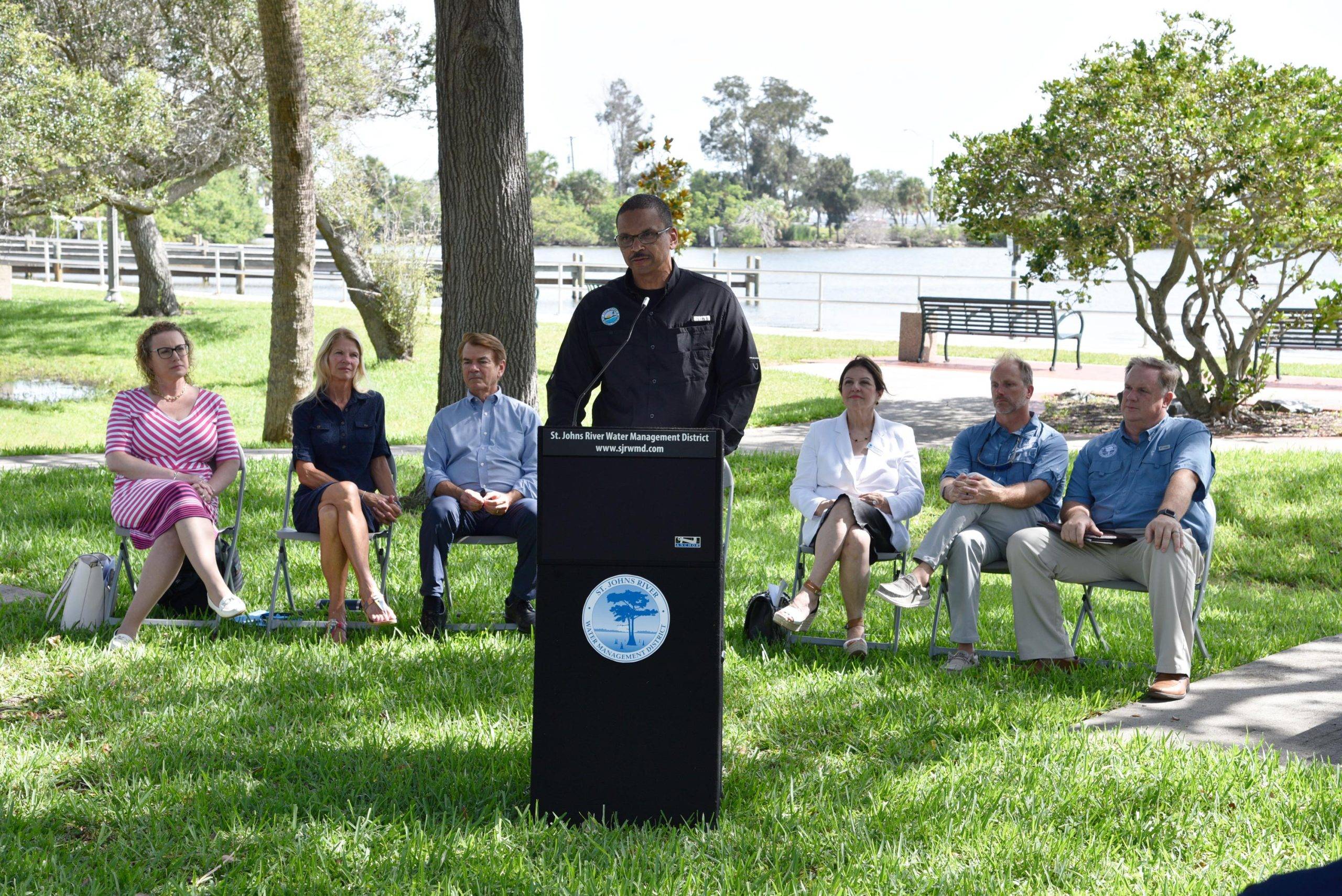District and partners celebrate projects and partnerships benefiting the Indian River Lagoon

St. Johns River Water Management District Executive Director Mike Register welcomes guests to the July 10 event recognizing important projects being implemented to benefit the Indian River Lagoon.

St. Johns River Water Management District Executive Director Mike Register welcomes guests to the July 10 event recognizing important projects being implemented to benefit the Indian River Lagoon.
PALATKA, Fla., July 10, 2023 — Today, the St. Johns River Water Management District gathered with local and regional partners, residents, and other interested stakeholders to celebrate several projects that will help further restoration efforts in the Indian River Lagoon (IRL).
“Over the past decade, the District has awarded nearly $40 million for projects in Indian River Lagoon communities, leveraging a total of $81 million in public dollars when combined with local matching funds and state funds from the Florida Department of Environmental Protection,” said St. Johns River Water Management District Executive Director Mike Register. “That is an impactful investment in ensuring the restoration of the Indian River Lagoon and none of it would be possible without the continued support of Gov. DeSantis, our legislators, the District’s Governing Board, and all our partners here today.”
The lagoon has been plagued by harmful algal blooms resulting from decades of human impacts, specifically from nutrients from stormwater runoff, drainage canals and other sources. For many years, the District has partnered with other agencies, including the Florida Department of Environmental Protection (DEP), local governments and water utilities to design and build tailor-made projects to restore degraded water bodies, including the Indian River Lagoon.
“As we continue to implement projects to restore iconic watersheds like the Indian River Lagoon, I am reminded of the unprecedented level of support secured under the DeSantis administration for Florida’s environment,” said DEP Secretary Shawn Hamilton. “This session, legislation passed establishing the Indian River Lagoon Protection Program and $100 million in funding was dedicated to support water quality improvement projects in this critical waterbody. We look forward to working with our partners to further our ongoing commitment to restoring the Indian River Lagoon.”
Sen. Debbie Mayfield, along with her legislative partners, has been instrumental in securing funding for projects to protect the Indian River Lagoon.
 “It has been an honor to work with the Governor and my legislative colleagues to deliver record funding for Indian River Lagoon restoration projects. The $25 million we appropriated in the 2020-2021 state budget and the $100 million secured in this year’s legislative session signify huge wins for the lagoon. Combined with the efforts of the St. Johns River Water Management District and significant financial commitments from our local partners, like Brevard County, we are working diligently together to restore this most precious natural resource for future generations.”
“It has been an honor to work with the Governor and my legislative colleagues to deliver record funding for Indian River Lagoon restoration projects. The $25 million we appropriated in the 2020-2021 state budget and the $100 million secured in this year’s legislative session signify huge wins for the lagoon. Combined with the efforts of the St. Johns River Water Management District and significant financial commitments from our local partners, like Brevard County, we are working diligently together to restore this most precious natural resource for future generations.”
Nearly 70 projects have either been planned or implemented to help restoration efforts throughout the IRL, with the focus being on reducing the amount of nitrogen and phosphorus entering the water body – two nutrients known to fuel harmful algal blooms.
The celebration today recognized three projects, Moorhen Marsh, Ponce Inlet Septic-to-Sewer project, and the groundbreaking of the Crane Creek / M-1 Canal flow restoration project.
The Crane Creek / M-1 Canal flow restoration project is a District-led project that the District’s Governing Board approved this past January. The M-1 Canal currently serves as a flood control canal, but over 100 years ago it was originally developed to redirect stormwater from 5,300 acres near the St. Johns River to the IRL. Along with the millions of gallons of water came thousands of pounds of harmful nutrients, including nitrogen and phosphorus. Once complete, the project will restore the natural flow of the stormwater from the IRL back west, where the water will be treated in a stormwater treatment area prior to reaching the St. Johns River.
Funding partners for Crane Creek include DEP, which provided a grant for $2.03 million, Brevard County, which contributed $2.45 million cost-share dollars through its Save Our Indian River Lagoon program and $4.5 million alternative water supply funding from federal sources through DEP.
Moorhen Marsh, which was jointly funded with DEP and Indian River County, is an aquatic plant-based treatment system that treats stormwater runoff from a 6,300-acre area. Capable of pumping and treating 10 million gallons per day, the project will reduce the amount of total nitrogen by 4,854 pounds per year (lbs/year) and total phosphorus by 785 lbs/year.
Ponce Inlet Ponce De Leon Circle Septic-to-Sewer project in Volusia County included the construction of gravity sewer, force main, manholes, a lift station and abandonment of up to 24 septic tanks with connection to sanitary sewer in the town of Ponce Inlet. The estimated nutrient load reduction water quality benefit to the Halifax River is 161 lbs/yr of total nitrogen. Funding for the project was provided by the District and DEP.
To learn more about the District’s work to restore the Indian River Lagoon, visit www.sjrwmd.com/waterways/renew-lagoon.
To learn more about the Crane Creek M-1 Canal Flow Restoration Project, visit www.sjrwmd.com/projects/#crane-creek.


